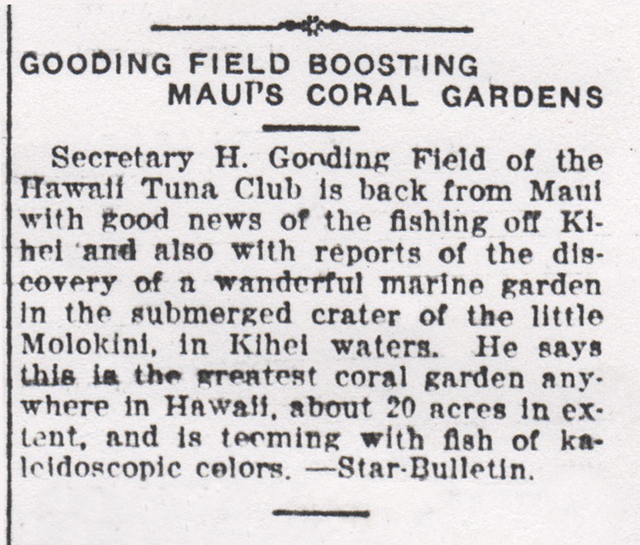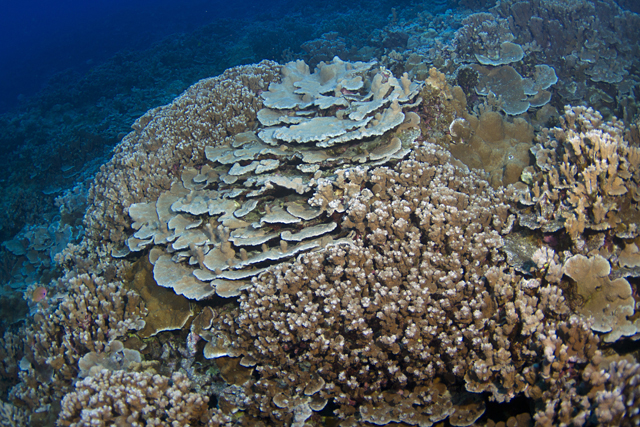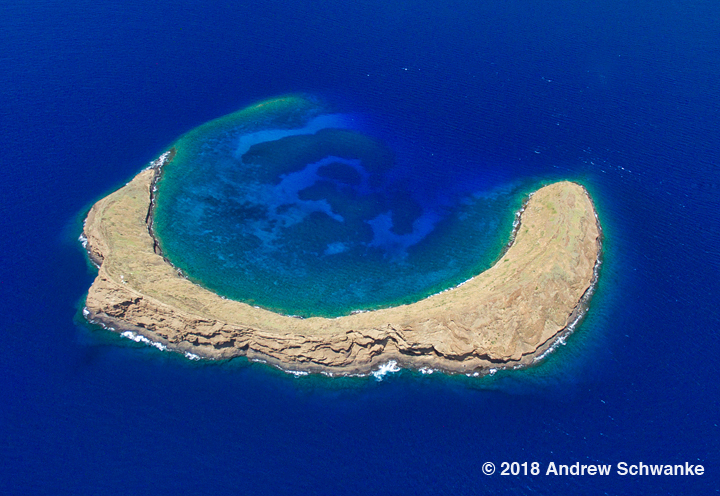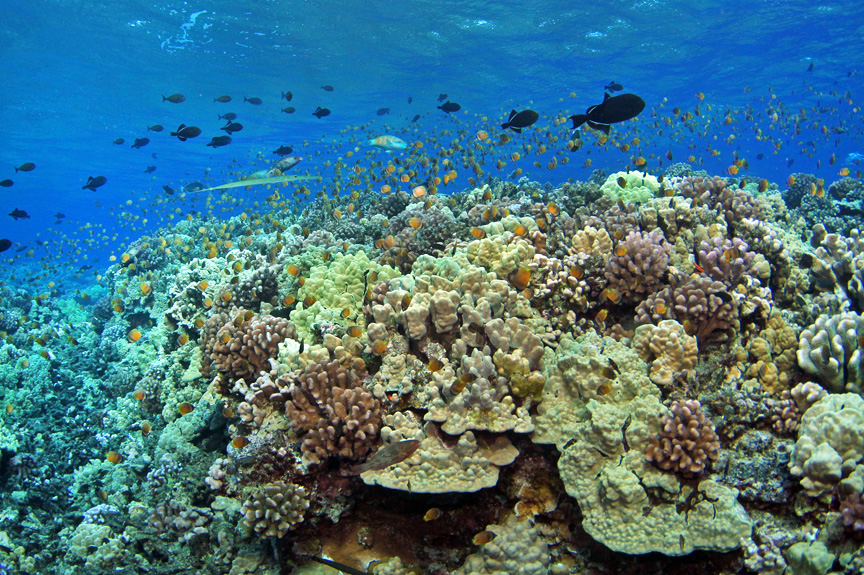It is almost unheard of for a coral reef to have made it into the media a hundred years ago. So few people snorkeled or dived back then that the underwater world, especially corals, was not often in the news. That a Hawai‘i reef did show up in the media so long ago shows just how special that reef was (and, fortunately, continues to be).

The Maui News published in the April 27, 1917 issue this tweet-length note from the Star-Bulletin (at right).
Harry Gooding Field, Secretary of the Hawai‘i Tuna Club, came over to Maui from O‘ahu and went on a fishing excursion in April of 1917. While he reported that the fishing off of Kihei was good, he RAVED about a coral reef that they “discovered” on that same trip. Can you guess where it was?
Of course! He was writing about the reef inside Molokini Crater. And when he said coral garden, this (photo below) is a snippet of the impressive reef that he was talking about. To see acres of fragile corals like these is extremely rare in Hawai‘i.

Impressive coral reef continues to thrive inside Molokini Crater. Two species of corals dominate here: Rice coral (Montipora capitata) and Spreading rice coral (Montipora patula). Photo P. Fiene.
The reef inside Molokini Crater consists of acres of hard corals. The reef is many meters high in some places, because the corals have been growing upward and outward for hundreds of years. When coral reef ecologist Dr. James Maragos came out with us to get a look at this reef for the first time in 1990, he was struck by the reef’s health and composition. Two species of corals dominate: rice coral (Montipora capitata) and spreading rice coral (Montipora patula). He told us he had never seen a reef dominated by these two species before. Both of these corals require calmer, more protected water to thrive. The unusual calm conditions inside Molokini over hundreds of years had allowed these two species of corals to outcompete most other coral species. Eventually they became the dominant species making up the reef.

The C-shape of Molokini’s rim has allowed a beautiful coral reef to grow within the protected crater. Photo: Andrew Schwanke
There are several reasons the reef at Molokini garnered such accolades from the O‘ahu fishers. The curvature of the volcano rim acts as protective arms. This prevents periodic big storm waves from moving, tumbling or breaking the coral reef inside the crater. Also, because Molokini is rock-like, little to no sediment washes into the ocean during rains. Sediment can stress and damage corals by reducing the sunlight which they need to survive. Also, Molokini is 3 miles offshore of Maui, so it is far from sediment or pollutants which wash off Maui due to agriculture and human activities.
Those protective factors continue to exist today. In addition, wise people brought about the designation of Molokini as a Marine Life Conservation District in 1977. It prevented the taking of marine life of any kind at Molokini, with the unfortunate exception of allowing trolling around the outside of the crater. Years later moorings were installed and the dropping of anchors was disallowed. Last year Molokini celebrated its 40-year anniversary as a Marine Life Conservation District.
And as for the kaleidoscope of fish… well, you can see where he came up with that description! This photo was taken on top of the rim of the crater where the corals receive a lot of wave action. You can see they are more hardy and robust than the delicate corals in the very center of the crater.

Life on top of the crater rim at Molokini. The coral species are hardier and more robust here because they experience more wave action than the center of the crater. Photo P. Fiene.
It is wonderful to be able to look back in time and read about the excitement people felt about Molokini. We feel that excitement almost every day we are there too. Thanks to the geographic location and physical features of Molokini, and thanks to its protected status as a marine life conservation district, the coral reef continues to be some of the healthiest reef in the state. Hopefully people will be “tweeting” about it for hundreds of years to come.
Written by Pauline Fiene. Photos as credited.

Comments 2
What a great read! Mahalo!
Thank you for the article!